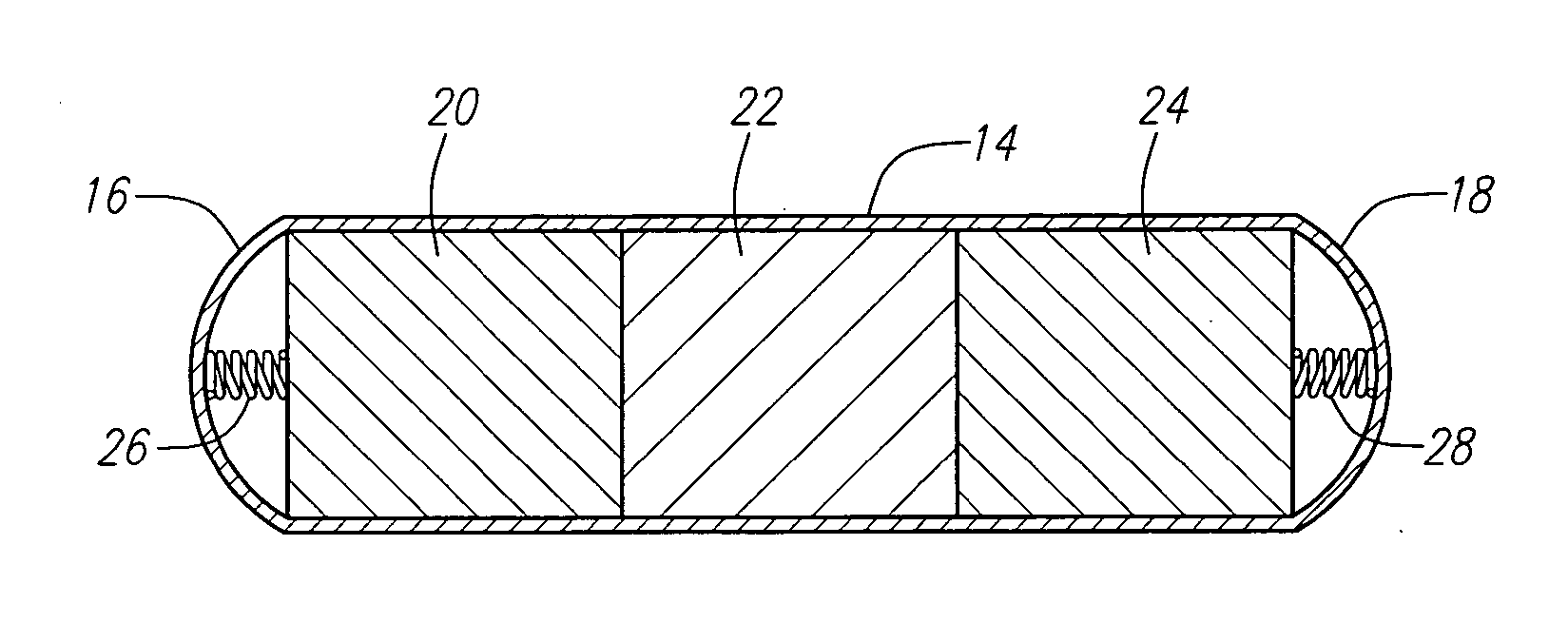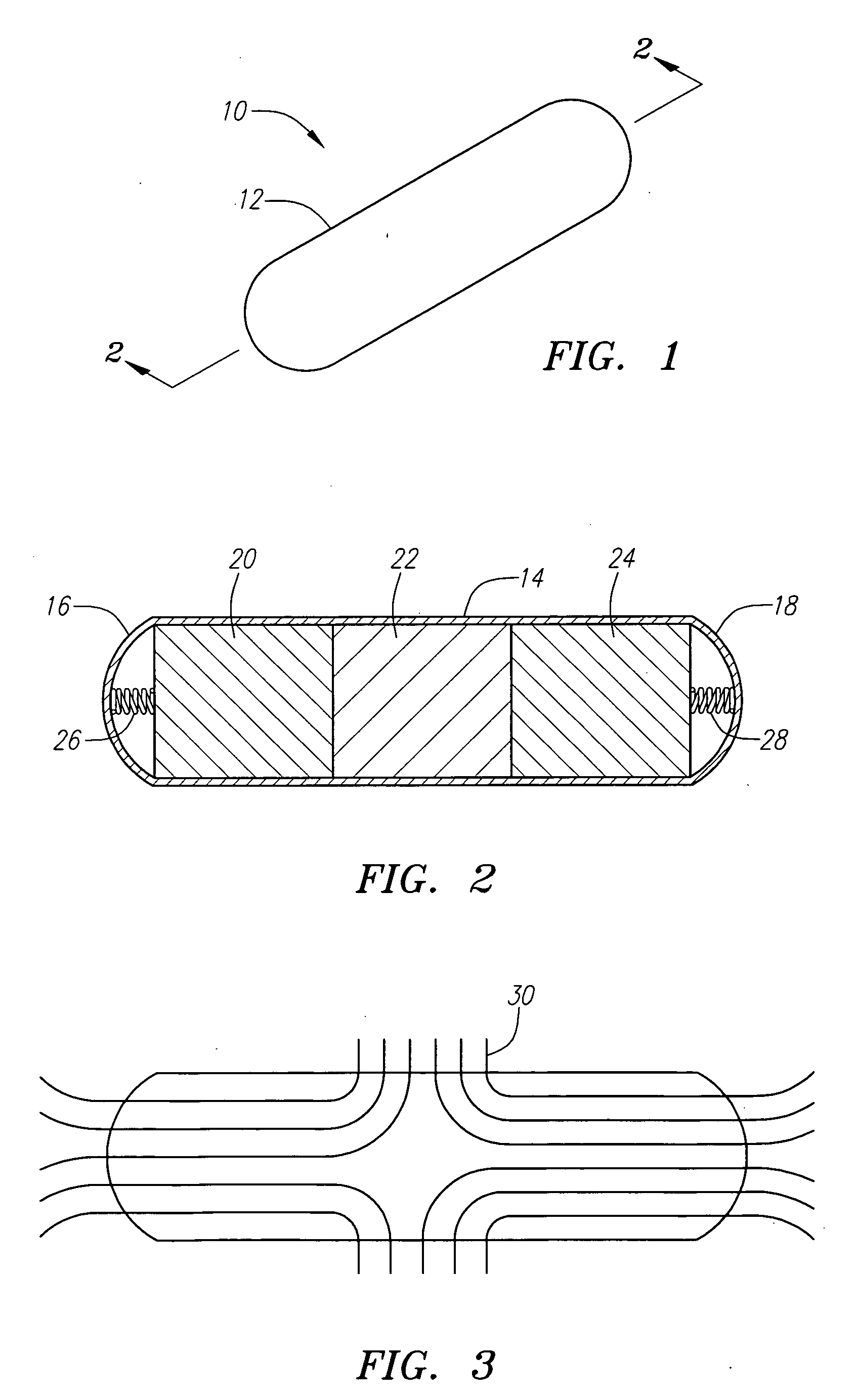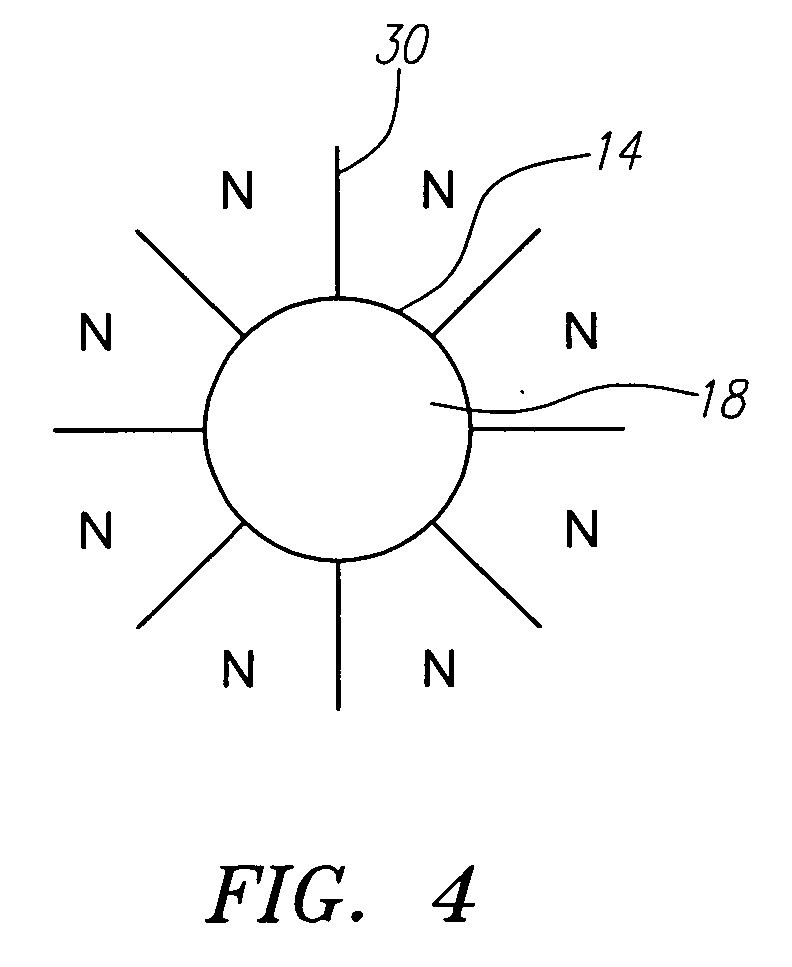Animal pill magnet having single polarity
a single-polarity, magnet technology, applied in the field of animal pill magnets, can solve the problems of limiting the amount of time that the head, eyes and ears were in a lowered position, the problem of modern cows confined in spaces, and the more vulnerable of predators to attack, so as to achieve the effect of minimizing the extension of the sharp end of the attached metal obj
- Summary
- Abstract
- Description
- Claims
- Application Information
AI Technical Summary
Benefits of technology
Problems solved by technology
Method used
Image
Examples
Embodiment Construction
[0028] The device of this invention is intended to be orally administered to a bovine animal and once administered, to permanently reside in the animal's reticulum, where it attracts and holds tramp iron that the animal ingests, thereby preventing the animal from contracting Hardware Disease. In order to understand this process, a diagram of the main anatomical components of a bovine digestive system of interest here are shown in FIG. 5. Beginning at the animal's head and mouth depicted at the right side of the diagram and moving to the left, the esophagus 100 leads to the animal's multi-compartment stomach including the reticulum 102 and the rumen 104. Although not shown on this diagram, the animals heart and lungs are located generally in the area adjacent to the reticulum 102. The animal's liver 106, pancreas 108, and gall bladder 110 are located adjacent the rumen 104, and to the abomasum 112, which leads to the small intestines 114. As this diagram shows, sharp-pointed or sharp...
PUM
 Login to View More
Login to View More Abstract
Description
Claims
Application Information
 Login to View More
Login to View More - R&D Engineer
- R&D Manager
- IP Professional
- Industry Leading Data Capabilities
- Powerful AI technology
- Patent DNA Extraction
Browse by: Latest US Patents, China's latest patents, Technical Efficacy Thesaurus, Application Domain, Technology Topic, Popular Technical Reports.
© 2024 PatSnap. All rights reserved.Legal|Privacy policy|Modern Slavery Act Transparency Statement|Sitemap|About US| Contact US: help@patsnap.com










